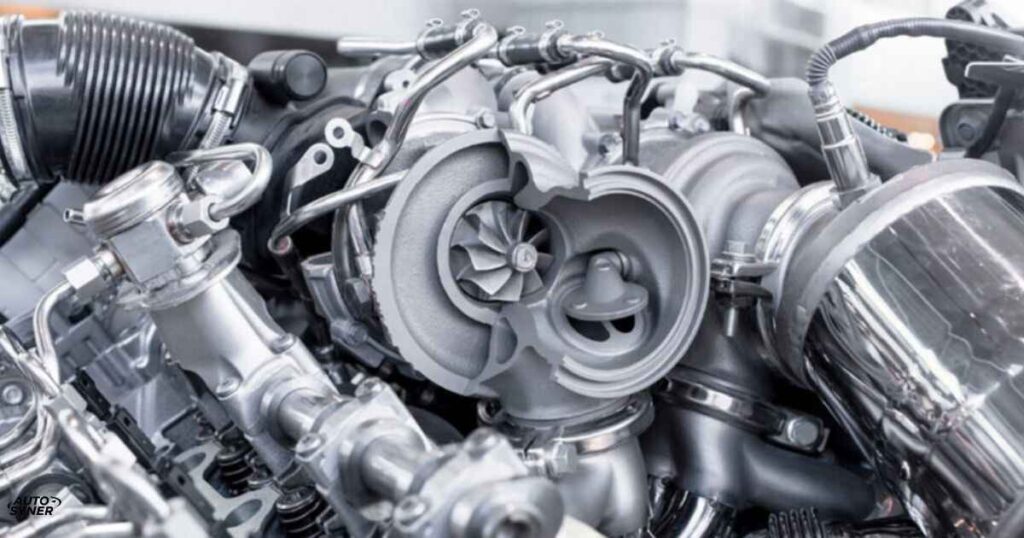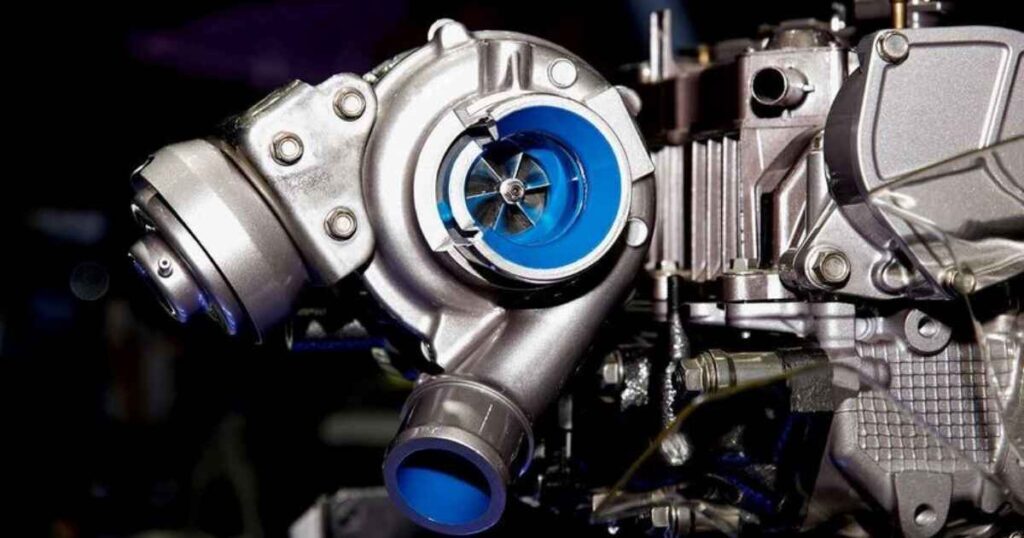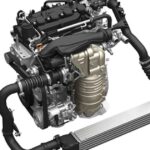Published on October 13, 2024
Is your turbocharged engine giving you sleepless nights? You’re not alone. Many drivers struggle with the complexities of turbo engine maintenance. The fear of costly repairs and unexpected breakdowns can be overwhelming. But what if you could protect your turbocharger and enjoy peace of mind?
In this comprehensive guide, we’ll explore six proven ways to extend your turbocharger lifespan. You’ll discover simple yet effective turbo system care tips that can save you thousands in repairs. By the end of this article, you’ll be equipped with the knowledge to keep your turbocharged engine purring for years to come.
Understanding Turbo Engines

Turbochargers have revolutionized the automotive industry. These compact powerhouses force extra air into the engine, boosting performance and fuel efficiency. But with great power comes great responsibility.
Turbocharged engine performance depends on proper care. Unlike naturally aspirated engines, turbos require special attention. They operate at extreme temperatures and speeds, making them more susceptible to wear and tear. Understanding how to preserve turbocharger health is crucial for any turbo engine owner.
The Importance of Turbo Engine Care
Neglecting your turbo engine can lead to catastrophic failure. Regular maintenance isn’t just about keeping your car running; it’s about preventing turbo wear and tear. A well-maintained turbo can last the lifetime of your vehicle.
Proper care ensures optimal performance and fuel efficiency. It also helps avoid turbocharger damage that can result in expensive repairs. By following the right maintenance schedule, you’ll enjoy the benefits of your turbo engine for years to come.
Regular Oil Maintenance: The Lifeblood of Your Turbo Engine
Oil is the lifeline of your turbo engine. It lubricates, cools, and protects the intricate components of your turbocharger. Turbo engine oil change frequency is more critical than in non-turbo engines.
Experts recommend changing oil every 5,000 miles for turbo engines. However, this can vary based on driving conditions and oil quality. Always consult your owner’s manual for specific recommendations.
Choosing the Right Oil for Your Turbo Engine
Not all oils are created equal when it comes to turbo engines. The best oil for turbo engines is typically a full synthetic with a high-temperature rating. These oils withstand the extreme heat generated by turbochargers.
Look for oils specifically designed for turbocharged engines. They often contain additives that protect against deposits and oxidation. Remember, investing in quality oil now can save you from costly repairs later.
Signs Your Turbo Engine Needs an Oil Change
Don’t wait for your dashboard light to signal an oil change. Be proactive and watch for these signs:
- Increased engine noise
- Decreased fuel efficiency
- Dark, dirty oil on the dipstick
- Burning smell from the engine
Regular oil checks can help you catch these issues early. If you notice any of these signs, it’s time for an oil change.
Warm Up the Engine: A Crucial Step for Turbo Protection
Cold starts are tough on any engine, but they’re particularly harsh on turbos. Proper turbo engine warm-up time is essential for longevity. It allows oil to circulate and lubricate all components before you hit the road.
Experts recommend idling for about 30 seconds before driving. Then, drive gently for the first few minutes. This allows the oil to reach operating temperature gradually, protecting your turbo from unnecessary wear.
The Science Behind Engine Warm-Up
During a cold start, oil is thick and doesn’t flow easily. This can leave turbo components temporarily unlubricated. As you drive, the oil heats up and thins out, providing better protection.
Warming up your engine properly ensures all parts are adequately lubricated before you demand high performance. This simple step can significantly extend turbocharger lifespan.
Ideal Warm-Up Techniques for Turbo Engines
Follow these steps for optimal turbo engine warm-up:
- Start the engine and let it idle for 30 seconds
- Drive gently for the first 5-10 minutes
- Avoid high RPMs until the engine reaches operating temperature
- Use the car’s temperature gauge as a guide
Remember, patience during warm-up pays off in turbo longevity.
Don’t Overstep the Limits of the Turbo when Cruising
Cruising at high speeds might be tempting, but it’s not always best for your turbo. Turbocharged engine driving tips often emphasize moderation. Constant high-speed driving can put excessive strain on your turbocharger.
Find your engine’s sweet spot – usually around 2,000-2,500 RPM for most turbo engines. This range often provides the best balance of performance and efficiency. It also helps prevent turbo wear and tear.
Understanding Your Turbo Engine’s Sweet Spot
Every turbo engine has an optimal operating range. This is where the engine runs most efficiently and with the least stress. It’s usually in the mid-range of your tachometer.
Operating within this range helps with turbo boost management. It allows the turbocharger to function without overworking. This balance is key to long-term turbo health.
The Consequences of Overworking Your Turbo
Constantly pushing your turbo to its limits can have serious consequences:
- Increased wear on turbo components
- Higher oil consumption
- Reduced fuel efficiency
- Potential for premature turbo failure
Remember, a turbo is designed to provide extra power when needed, not constantly. Treat it with respect, and it will serve you well for years.
Use Your Gears to Overtake: Protecting Your Turbo During Acceleration
Overtaking is where many drivers push their turbos too hard. Downshifting for turbocharged cars is a skill worth mastering. It allows you to accelerate without overworking your turbo.
When you need to overtake, downshift first. This puts your engine in its power band, reducing the need for extreme turbo boost. It’s a smoother, more controlled way to accelerate that’s kinder to your turbocharger.
The Relationship Between Gears and Turbo Performance
Gears and turbos work hand in hand. Lower gears provide more torque, reducing the work your turbo needs to do. This relationship is key to turbocharged engine performance.
Using your gears effectively helps manage turbo boost. It prevents sudden spikes in boost pressure that can stress your turbocharger. This balanced approach helps preserve turbocharger health.
Effective Overtaking Strategies for Turbo Engines
Follow these steps for turbo-friendly overtaking:
- Plan your overtake in advance
- Downshift to the appropriate gear
- Accelerate smoothly, avoiding sudden throttle inputs
- Shift up once you’ve completed the overtake
These techniques help you harness your turbo’s power safely and efficiently.
Let the Engine Cool After Driving: A Critical Cool-Down Period
After a drive, especially a hard one, your turbo needs time to cool. Turbo cooling techniques are crucial for longevity. Shutting off your engine immediately after a hard drive can cause oil to cook in the turbo.
Experts recommend idling for about a minute after driving. This allows oil to continue circulating, cooling the turbo gradually. It’s a simple step that can significantly extend turbocharger lifespan.
Read This Blog :Service Side Detection System: Meaning, Causes & How to Reset
The Dangers of Immediate Shutdown for Turbo Engines
When you shut off your engine, oil flow stops immediately. If your turbo is still spinning at high speeds, this can lead to oil coking. Coking occurs when oil bakes onto turbo components, causing damage over time.
Immediate shutdown can also cause thermal shock. The rapid temperature change can lead to warping or cracking of turbo components. A proper cool-down period helps avoid these issues.
Proper Cool-Down Techniques for Your Turbo Engine
Follow these steps for effective turbo cool-down:
- Drive moderately for the last few minutes of your journey
- Let the engine idle for 60 seconds after parking
- Avoid revving the engine during cool-down
- Use this time to check your surroundings or gather your belongings
These simple habits can add years to your turbocharger’s life.
Don’t Blip the Throttle Before Turning the Engine Off
It might be tempting to give your engine a rev before shutting it off. However, this practice can be harmful to turbo engines. That final rev can leave your turbo spinning without proper lubrication.
When you blip the throttle, you’re asking your turbo to spool up one last time. But when you shut off the engine immediately after, oil flow stops while the turbo is still spinning. This can lead to premature wear and damage.
The Science Behind Proper Turbo Engine Shutdown
Turbochargers can spin at speeds up to 250,000 RPM. At these speeds, proper lubrication is critical. When you shut off your engine, oil pressure drops rapidly. If your turbo is still spinning at high speeds, it can lead to bearing damage.
Also Read This Blog : Why Is My Car Accident Settlement Taking So Long?
A gentle shutdown allows your turbo to slow down naturally. This ensures that all components are properly lubricated until they come to a complete stop. It’s a small step that can have a big impact on turbo longevity.
Best Practices for Shutting Down Your Turbo Engine
Follow these steps for a turbo-friendly shutdown:
- Let the engine idle for about 60 seconds
- Avoid revving or blipping the throttle
- Turn off the engine smoothly
- Wait a moment before exiting the vehicle
These simple habits can help prevent turbo wear and tear and extend the life of your engine.
Additional Tips for Turbo Engine Maintenance
While the six main points cover the essentials, there are additional steps you can take to keep your turbo in top shape. Regular inspections and preventative maintenance can catch small issues before they become big problems.
Consider using fuel additives for turbo engines. These can help clean injectors and prevent carbon buildup. However, always choose additives specifically designed for turbocharged engines.
Common Misconceptions About Turbo Engine Care
There are many myths surrounding turbo engine care. Let’s debunk a few:
- Myth: Turbos always fail early Truth: With proper care, turbos can last the life of the engine
- Myth: You need to rev the engine before shutdown Truth: This can actually harm your turbo
- Myth: Turbo cars require premium fuel Truth: This depends on the specific engine design, not the turbo itself
Understanding these truths can help you make informed decisions about your turbo engine care.
Frequently Asked Question
How often should I change the oil in my turbo engine?
Every 5,000 miles or as recommended by your manufacturer.
Can I use regular oil in a turbocharged engine?
It’s best to use oil specifically designed for turbo engines.
How long should I let my turbo engine warm up?
Idle for 30 seconds, then drive gently for 5-10 minutes.
Is it bad to drive a turbo car short distances?
Frequent short trips can be hard on turbos. Try to combine short trips when possible.
What are the signs of a failing turbocharger?
Loss of power, excessive exhaust smoke, and unusual whistling noises are common signs.
Can I install a turbocharger on a non-turbo engine?
While possible, it’s complex and expensive. Consult a professional before attempting this.
Conclusion
Following these 6 Ways to Protect Your Turbo Engine can significantly extend its lifespan. Regular maintenance, proper driving habits, and attention to detail are key to enjoying the benefits of your turbocharged engine for years to come.
Remember, a little care goes a long way in preserving turbocharger health and ensuring optimal performance.







